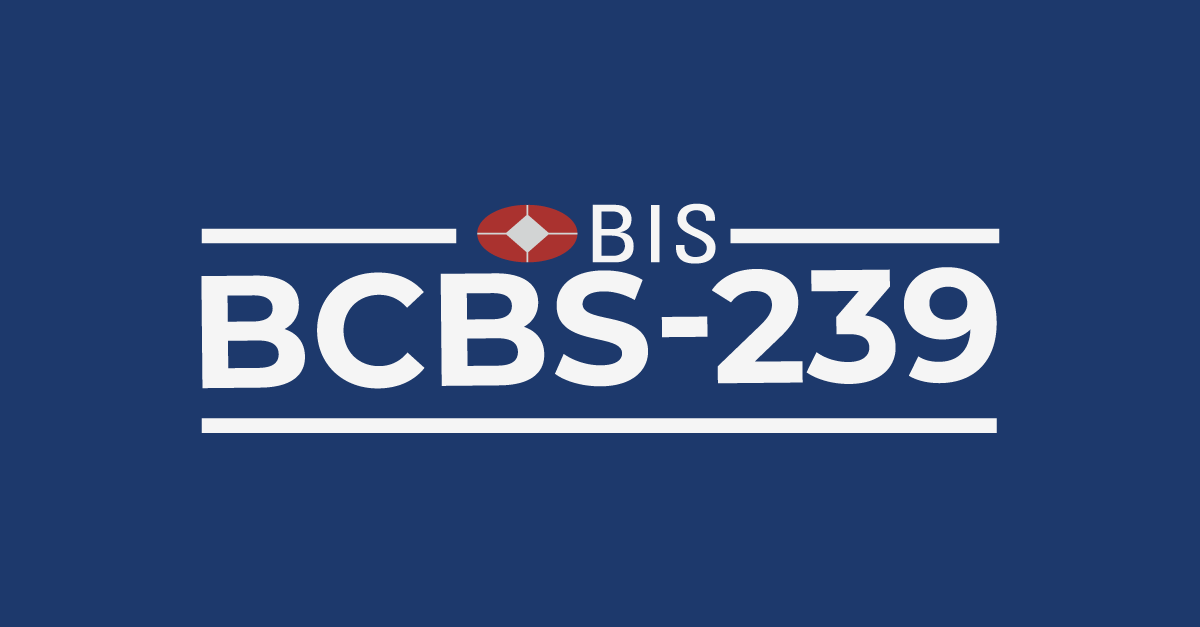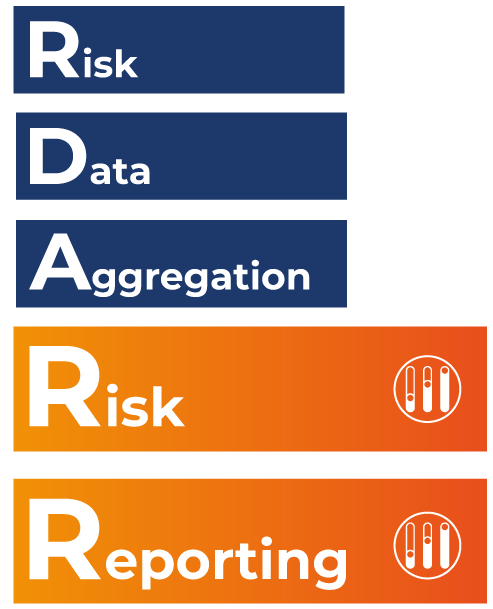BCBS-239 Compliance Guide: How Can Banks Ensure Accurate Risk Reporting?

1. Why was the BCBS-239 Compliance Regulation introduced?
2. What is BCBS-239 compliance?
3. What are the business benefits of successfully implementing the principles?
4. Ensuring BCBS-239 Reporting Accuracy At All Times
5. Is Your Bank Meeting BCBS-239 Compliance Requirements?
6. FAQs about BCBS-239 Compliance
Why was the BCBS-239 Compliance Regulation introduced?
After the 2007 financial crisis and the collapse of Lehman Brothers the following year, it raised doubts about how well the banking industry was able to do effective risk data aggregation and risk reporting; two topics that are important for any bank but particularly important for G-SIBs (Global Systemically Important Banks) because of their systemic influence in the financial world. With their IT and data architecture being inadequate to deal with financial risks, along with weak risk data aggregation capabilities, the events of Lehman Brothers became the climax of the financial crisis.
In response to this, the Basel Committee on Banking Supervision created a global regulatory standard for all G-SIBs called the BCBS-239 to increase banks’ ability to identify and manage risk. BCBS-239 compliance is a clear framework for effective RDARR (risk data aggregation and risk reporting), involving principles to be put in place to enhance risk management and decision making in banks, intending to create a barrier to what happened in 2007.
Today, banks are making progress in numerous fields, especially on the architecture side of collecting and cataloging data. However, they still need to make progress in other areas, such as the reporting side of things, which corresponds to Principle 7 of BCBS-239. We can see that banks are making some progress, which is great, but the regulation clearly states that “implementation of the Principles should be a dynamic or ongoing process,” highlighting the need for continuous strategies to increase accuracy in their reports. However, banks are using unverified reports and KPIs such as credit risk exposure, currency risk exposure, etc, generated from Analytics software to do that. They are potentially ignoring an important risk: the fact that the data displayed in those dashboards and reports is wrong or incomplete, and that’s not necessarily because of the data itself. This article will define BCBS-239, highlight the business benefits, and explain how you can ensure 100% accuracy of your risk reports using Wiiisdom.
What is BCBS-239 compliance?
BCBS-239 compliance regulation is a set of 14 RDARR principles to help banks reduce the severity of losses or systemic crises (such as the 2008 financial crisis) due to poor risk management. A regulation primarily aimed at G-SIBs but also strongly recommended for D-SIBs (Domestic Systemically Important Banks) to apply the same principles. The 14 principles can be grouped into 4 categories:
- Governance and Infrastructure
Banks should have a strong governance framework, risk data architecture, and IT infrastructure in place, which are preconditions for compliance with the principles.
- Risk Data Aggregation Capabilities
Banks should have effective risk data aggregation capabilities in place to ensure their risk management reports are always reliable.
- Risk Reporting Capabilities
Risk reports must be accurate and precise to ensure that a bank’s board and senior management can rely on their reports and make critical decisions about risk.
- Supervision and Cooperation
During the compliance process, supervisors will assess and monitor the progress taken and cooperate with other banks to determine whether enhancements are required or not within the principles.
What are the business benefits of successfully implementing the principles?
Banks will see several business benefits when it comes to implementing the BCBS-239 principles. For example:
- Increases the value of the bank.
- Increases efficiency.
- Reduces the probability of losses.
- Enhances strategic decision-making.
- Increases profitability.
Despite the clear benefits of implementing the BCBS 239 principles, the Basel Committee’s 2023 assessment revealed that most global systemically important banks (G-SIBs) still fall short of full compliance. While many have made notable progress, particularly in areas like data collection, storage, cataloging, and lineage, significant gaps remain in risk reporting. This critical function sits on top of the analytics layer, the last mile of the data journey. Without robust governance and trust in their analytics, how can banks ensure the accuracy of their risk reports? And without that assurance, how can regulators and supervisors make confident, informed decisions?
When we look closely at the different principles, there is one in particular that is the weak link in the BCBS-239 strategy: Principle 7, which focuses on the accuracy of risk reports.

Ensuring BCBS-239 Reporting Accuracy At All Times
Principle 7
Accuracy: Risk management reports should accurately and precisely convey aggregated risk data and reflect risk in an exact manner. Reports should be reconciled and validated.
Banks’ risk data aggregation and risk reporting practices should be subject to high standards of validation to ensure compliance with Principle 7. This requires agility in order to speed up the decision-making process for a bank’s board and senior management. For example, in early 2022, before the Russian/Ukraine crisis, regulators asked banks to report on their risk exposure to a potential war, showing the importance of this whole mechanism, which must combine efficiency and reliability. To achieve this, banks must carry out automated reconciliation and equally be able to document the reconciliation results. Wiiisdom becomes the missing piece of the puzzle in a bank’s BCBS-239 compliance strategy.
Data quality alone does not guarantee that a bank’s Chief Risk Officer has trusted risk reports to provide to the regulator or to make decisions. Between the data warehouse (storing the aggregate risk data) and the BI and Analytics platform, the data can be transformed in a number of waysthus putting its quality at risk (you can access our guide on Data Analytics QA). Wiiisdom ensures each and every risk report is displaying the right information and continues to do so in the future through reconciliation and validation. Equally, our solutions provide banks the ability to review their compliance progress with the BCBS-239 principles by documenting test results over time.
Principle 7 states that banks should maintain, at a minimum, “Automated and manual edit and reasonableness checks, including an inventory of the validation rules that are applied to quantitative information.” To do this, banks must take advantage of automation solutions that use technologies to carry out all the necessary checks of their risk reports to ensure that the accuracy is never compromised. Manual checks are simply no longer an option for banks due to the risk of human errors that could have disastrous consequences further down the line. Automation is a must.
It’s important to remember that it’s an ongoing process; whether you become compliant with this principle, it doesn’t stop there. You need to make sure you’re consistently compliant with BCBS-239, especially when there are significant upstream changes to the data journey or when your risk profiles or strategic initiatives evolve. These principles are now getting widely adopted by other departments in your organization, such as the finance department, so applying these principles is not a one-off project but rather a constant effort for compliance and optimization.
Is Your Bank Meeting BCBS-239 Compliance Requirements?
BCBS-239 compliance provides banks the reassurance that their risk data aggregation and risk reports are accurate, reliable, and precise in order to make the best decisions about risk. Ensuring risk report accuracy not only allows banks to be compliant with BCBS-239 but also mitigates an inherent operational/technological risk for them, which is the risk of relying on unverified, ungoverned, untrustworthy reporting.
At Wiiisdom, we help banking organizations ensure all reports are validated at all times – if you are interested in learning more about how we can with BCBS-239 compliance, get in touch with us today.
FAQs about BCBS-239 Compliance
Q: What is BCBS-239?
A: BCBS-239 is a regulatory framework by the Basel Committee that outlines 14 principles for risk data aggregation and reporting in banks.
Q: Why is Principle 7 important?
A: Principle 7 ensures that risk reports are accurate, validated, and reliable, enabling better decision-making and regulatory compliance.
Q: What solutions are available to validate reports subject to BCBS-239 compliance?
A: Wiiisdom provides automated reconciliation and validation solutions to ensure banks’ risk data aggregation and risk reporting are accurate and compliant.
Q: What are the benefits of BCBS-239 compliance?
A: The benefits include: increased value of the bank, increased efficiency, reduced probability of losses, enhanced strategic decision-making, and increased profitability.

